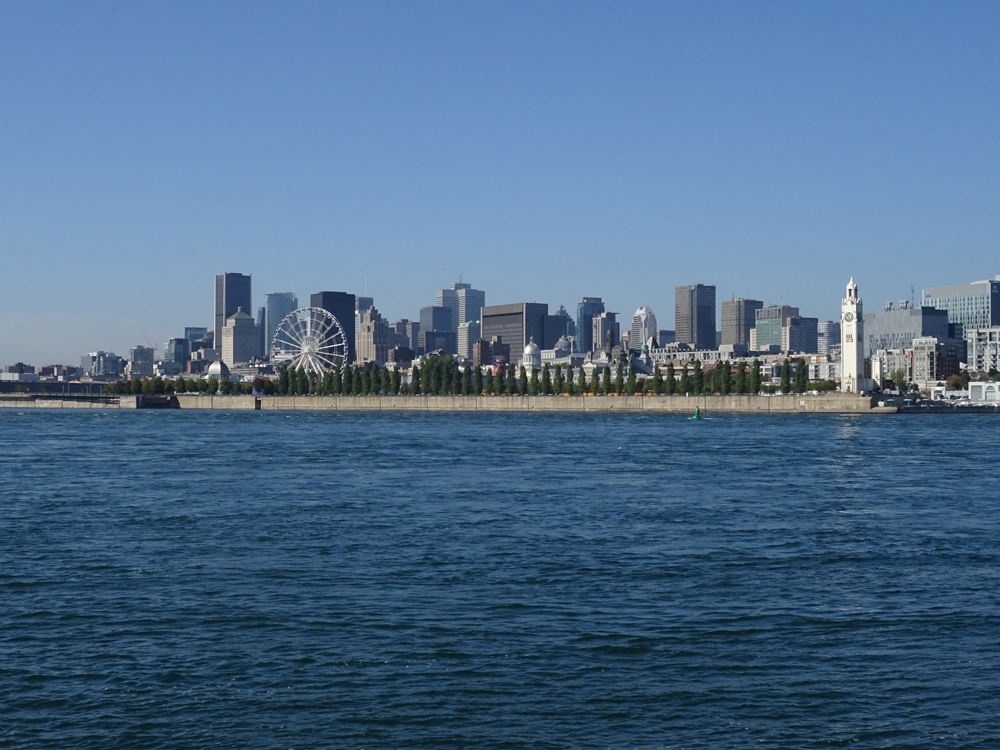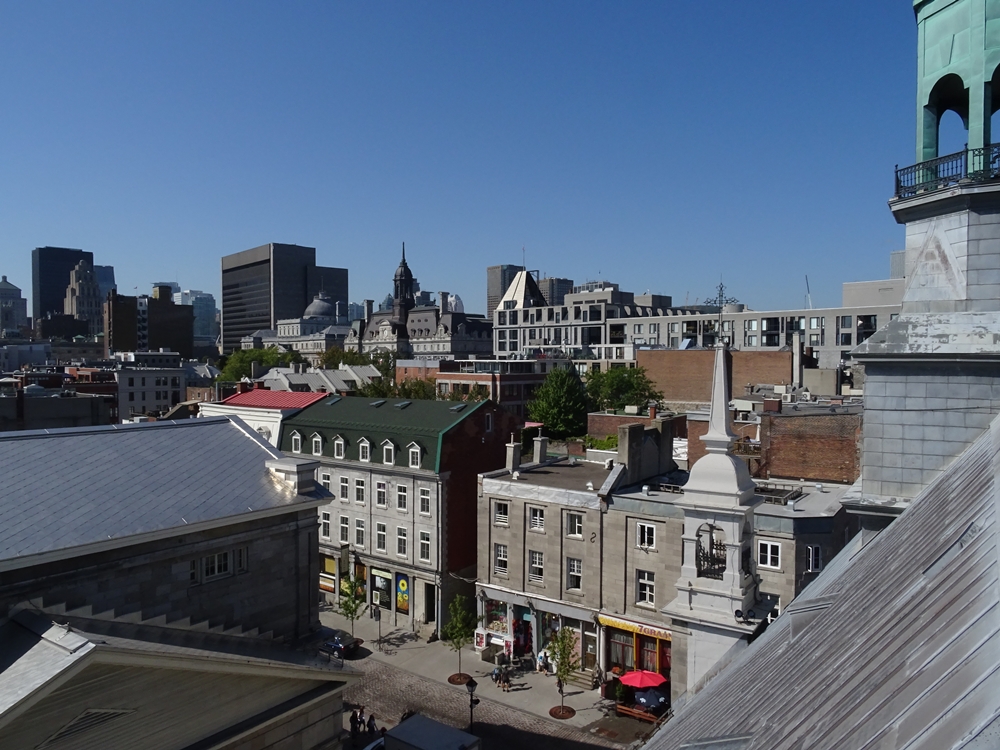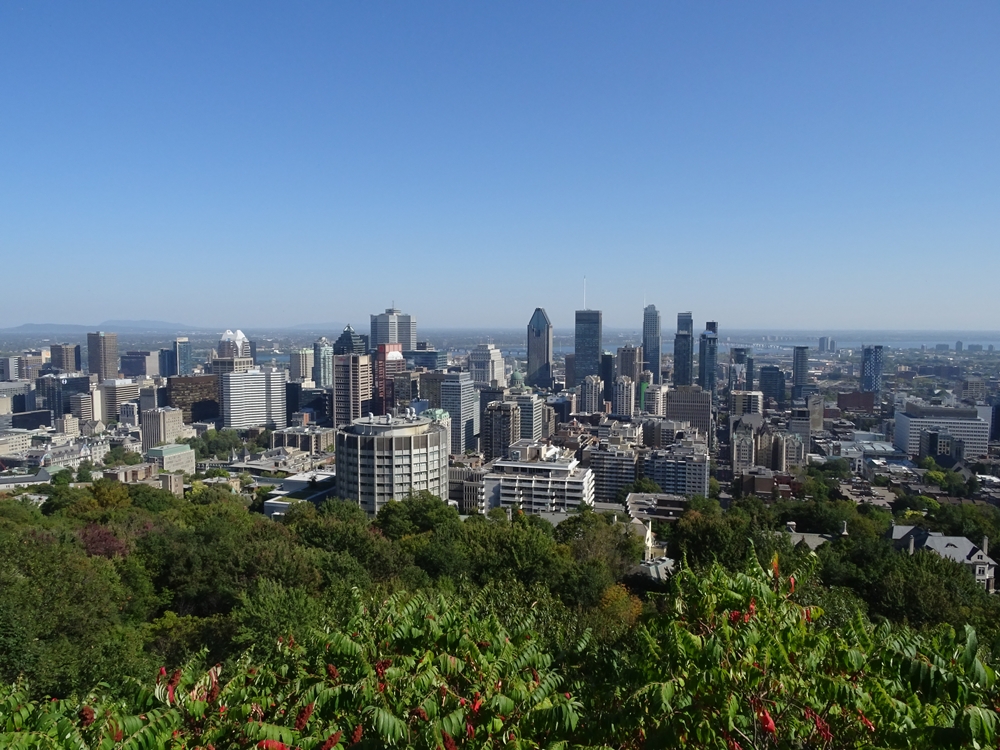 In September 2017 we visited the great city of Montreal. By coincidence it was exactly 10 years since my first visit. Here I have to admit I had an awful experience during that first visit. We only had a few hours in the city and on top of that the weather was dreadful. It was raining heavily. Despite that we tried to be positive and see as much as we could but it didn’t really work. We were wet, cold and annoyed by the time we got back to our car completely soaked. We drove off west towards Toronto and didn’t think much about the whole Montreal experience.
In September 2017 we visited the great city of Montreal. By coincidence it was exactly 10 years since my first visit. Here I have to admit I had an awful experience during that first visit. We only had a few hours in the city and on top of that the weather was dreadful. It was raining heavily. Despite that we tried to be positive and see as much as we could but it didn’t really work. We were wet, cold and annoyed by the time we got back to our car completely soaked. We drove off west towards Toronto and didn’t think much about the whole Montreal experience.
This time things looked much more promising. Montreal was the last point of our Canadian itinerary, we could spend two nights in the city and the weather was glorious.
Before heading to Montreal we actually spent some time exploring the vicinity of the metropolitan area. One of the more interesting sites was Fort Chambly located around 30 km from central Montreal. It was built in 1665 by the French in order to protect travellers on the river from the Iroquois. But the impressive stone structure visible today dates mostly from around 50 years later. It is good place to spend an hour or two, wandering around and learning interesting history of French colonization of the area and the subsequent conflicts with Britain.
In Montreal we based ourselves in a motel on the outskirts but conveniently located a short walk from the metro station. Montreal has an efficient and quite impressive (if rather brutalist) metro system built mostly in 1960s and 70s (with some later extensions). Our first full day in Montreal started from taking the metro straight from our hotel to Île Sainte-Hélène located in the middle of the Saint Lawrence River. The island is dominated by green spaces and recreational facilities but we went there to check out the views. Across the river channel there is great panorama towards Old Montreal and modern downtown behind it. The views where especially glorious in the early morning sunshine. The sun behind us meant it also a very good time and location for photography. Well worth an excursion.
From the island we returned straight to mainland Montreal. Well, it is actually a bit more complicated. Most of Montreal is located on the Island of Montreal. At around 500 square kilometres it is almost 10 times the size of Manhattan, so I guess we can colloquially call it “the mainland”. Anyway, what I wanted to say is that we went to explore central Montreal.
 We started from strolling around Old Montreal. While not as old as Quebec City it was founded in 1642 which still makes it one of the oldest European settlements in North America. For a better overview we visited the Notre-Dame-de-Bon-Secours Chapel (which is actually a church, not a chapel) where we climbed the tower. From the top one can see fantastic contrasts between the old stone buildings of Vieux-Montréal and the concrete, steel and glass of the modern city. Since we knew we are going to meet a friend here later we decided to venture to other parts of town, away from the river. First we headed north and took Rue Saint-Denis which is the main street of Quartier Latin. It is an area full of restaurants, atmospheric cafes and boutiques, in other words a quite funky and trendy neighbourhood. To be honest most modern big cities have one of those nowadays. Which didn’t make it any less fun, but we actually just strolled through while on our way to a map shop located in the vicinity. Yes, I am a map geek, can’t skip any of those.
We started from strolling around Old Montreal. While not as old as Quebec City it was founded in 1642 which still makes it one of the oldest European settlements in North America. For a better overview we visited the Notre-Dame-de-Bon-Secours Chapel (which is actually a church, not a chapel) where we climbed the tower. From the top one can see fantastic contrasts between the old stone buildings of Vieux-Montréal and the concrete, steel and glass of the modern city. Since we knew we are going to meet a friend here later we decided to venture to other parts of town, away from the river. First we headed north and took Rue Saint-Denis which is the main street of Quartier Latin. It is an area full of restaurants, atmospheric cafes and boutiques, in other words a quite funky and trendy neighbourhood. To be honest most modern big cities have one of those nowadays. Which didn’t make it any less fun, but we actually just strolled through while on our way to a map shop located in the vicinity. Yes, I am a map geek, can’t skip any of those.
After lunch in one of those atmospheric cafes we headed towards Mount Royal. But before we got there we had to cross some residential areas north and east of the hill. It happened to be quite a gem. I actually found those neighbourhoods to be some of the most charming parts of the city.  Quiet leafy streets full of beautiful historic houses, for example the area around the Square Saint-Louis. Most of the houses have quite impressive (for their size) mansard roofs and external stairs to the main entrances. I find the mansard roofs probably the most distinctive feature of Quebec province architecture. It really makes cites, town and villages there different from the rest of North America. And Montreal is no exception. After taking many photographs (some would say too many) it was finally time to climb the hill of Mount Royal.
Quiet leafy streets full of beautiful historic houses, for example the area around the Square Saint-Louis. Most of the houses have quite impressive (for their size) mansard roofs and external stairs to the main entrances. I find the mansard roofs probably the most distinctive feature of Quebec province architecture. It really makes cites, town and villages there different from the rest of North America. And Montreal is no exception. After taking many photographs (some would say too many) it was finally time to climb the hill of Mount Royal.
As you might have guessed the city actually takes its name from the hill which at 233m above the sea level clearly dominates over it. And that’s the whole point of getting there, it offers great panoramic views over the downtown and further afield across the river. But first you have to reach the top. It is quite a climb, especially on a hot sunny day (like during our visit). Luckily most of the hill is a heavily forested park so we could hike in shade. At the top there is Mount Royal Chalet, a pavilion built in 1932 in the French Beaux Art style which hosts a shop, cafe and toilets. It has some interesting Canadian touches such as carvings of local fauna and murals depicting history of New France. Most importantly in front of it is a terrace offering unparalleled views of Montreal. It is one of those classic views you might have seen on postcards or in promotional videos. No surprisingly as the panorama of Montreal skyline is absolutely fantastic. We spent quite some time there, just admiring the views and relaxing after the climb.
But then it was time to head back as it was already afternoon. We had such a good time so far we didn’t even realise the time. From Mount Royal we headed straight down towards McGill University campus and then towards the heart of modern Montreal downtown.
 There is some interesting architecture in downtown, especially dating from the late 19th and early 20th century when Montreal was the commercial capital of Canada (and before Toronto really took over). For example the 24-storey Sun Life Building (located on Dorchester Square) was the largest building in the British Empire when it was finished in 1931. Next to it stands Cathédrale Marie-Reine-du-Monde which was consecrated in 1894. It is a massive church modelled on Saint Peter’s Basilica in Rome. On the way towards the Place d’Armes we passed more impressive commercial buildings, many of them decorated with interesting Canada-themed details.
There is some interesting architecture in downtown, especially dating from the late 19th and early 20th century when Montreal was the commercial capital of Canada (and before Toronto really took over). For example the 24-storey Sun Life Building (located on Dorchester Square) was the largest building in the British Empire when it was finished in 1931. Next to it stands Cathédrale Marie-Reine-du-Monde which was consecrated in 1894. It is a massive church modelled on Saint Peter’s Basilica in Rome. On the way towards the Place d’Armes we passed more impressive commercial buildings, many of them decorated with interesting Canada-themed details.
 On the north side Place d’Armes stands the beautiful, Pantheon-like, Bank of Montreal building finished in 1847. The sculptures on the pediment were added in 1867 and represent Native American and pioneer motives. But the square is really dominated by Notre-Dame Basilica, the twin towers of which really stand out on the south side. The interior of the church is among the most dramatic in the world and regarded as a masterpiece of Gothic Revival architecture. The vaults are coloured deep blue and decorated with golden stars. Together with the previously mentioned cathedral it shows how important Catholicism once (even until fairly recently) was for Quebec culture and identity.
On the north side Place d’Armes stands the beautiful, Pantheon-like, Bank of Montreal building finished in 1847. The sculptures on the pediment were added in 1867 and represent Native American and pioneer motives. But the square is really dominated by Notre-Dame Basilica, the twin towers of which really stand out on the south side. The interior of the church is among the most dramatic in the world and regarded as a masterpiece of Gothic Revival architecture. The vaults are coloured deep blue and decorated with golden stars. Together with the previously mentioned cathedral it shows how important Catholicism once (even until fairly recently) was for Quebec culture and identity.
From the square we entered the narrow streets of Vieux-Montréal. Suddenly the feel became much more “European” than “American”. Streets are paved with cobble stones and buildings are not unlike Saint-Malo in Brittany which, coincidentally, we visited a few months later. We strolled around aimlessly and eventually met a friend for a drink in one of the bars with outdoor seating. On a warm September day it was a really pleasant evening which ended much, much later with dinner in Montreal’s Chinatown.
 Following day was the last one of our two-week trip. But our flight was late in the afternoon so we decided to walk a bit more around town. Our friend took us for a stroll along Saint Laurent Boulevard which is also called “The Main”. It traditionally divided Montreal between English (west) and French (east) side and other ethnic groups often settled in between. We walked as far as Little Portugal (our friend’s parents came from there) before returning to downtown to retrieve our car and drive to the airport.
Following day was the last one of our two-week trip. But our flight was late in the afternoon so we decided to walk a bit more around town. Our friend took us for a stroll along Saint Laurent Boulevard which is also called “The Main”. It traditionally divided Montreal between English (west) and French (east) side and other ethnic groups often settled in between. We walked as far as Little Portugal (our friend’s parents came from there) before returning to downtown to retrieve our car and drive to the airport.
I’m glad I returned to Montreal. After my previous trip, spoiled by an awful weather, I was really not impressed. But now I can safely say that Montreal is one of the most interesting cities I have ever visited. Its location and topography is splendid and its cultural, ethnic and language mix fascinating. French language dominates but English is still fairly widely used, much more than in Quebec City. In fact together with federal Ottawa and parts of New Brunswick it is one of a few truly bilingual places in Canada, a place where waiters causally welcome customers with Bonjour-Hello.
The whole two-week road trip across Quebec and Atlantic Canada was one of my most interesting trips in recent years. The scenery might not be as spectacular as in American or Canadian West and wildlife not as exotic as in Deep South or Florida but the coast is still mostly wild, interior forested and empty, and history absolutely fascinating. Many locations on our route are must see places for anyone trying to understand the North American history and creation of modern day Canada. It was a perfect trip for year 2017, the 150th anniversary of the Canadian Confederation.